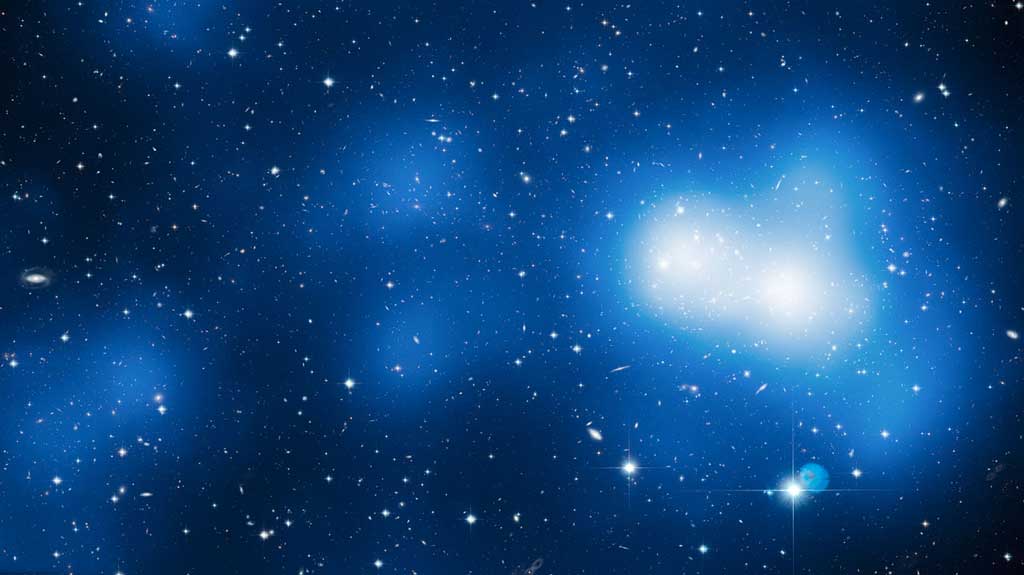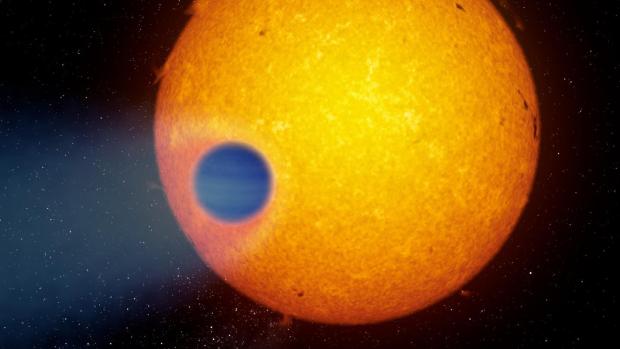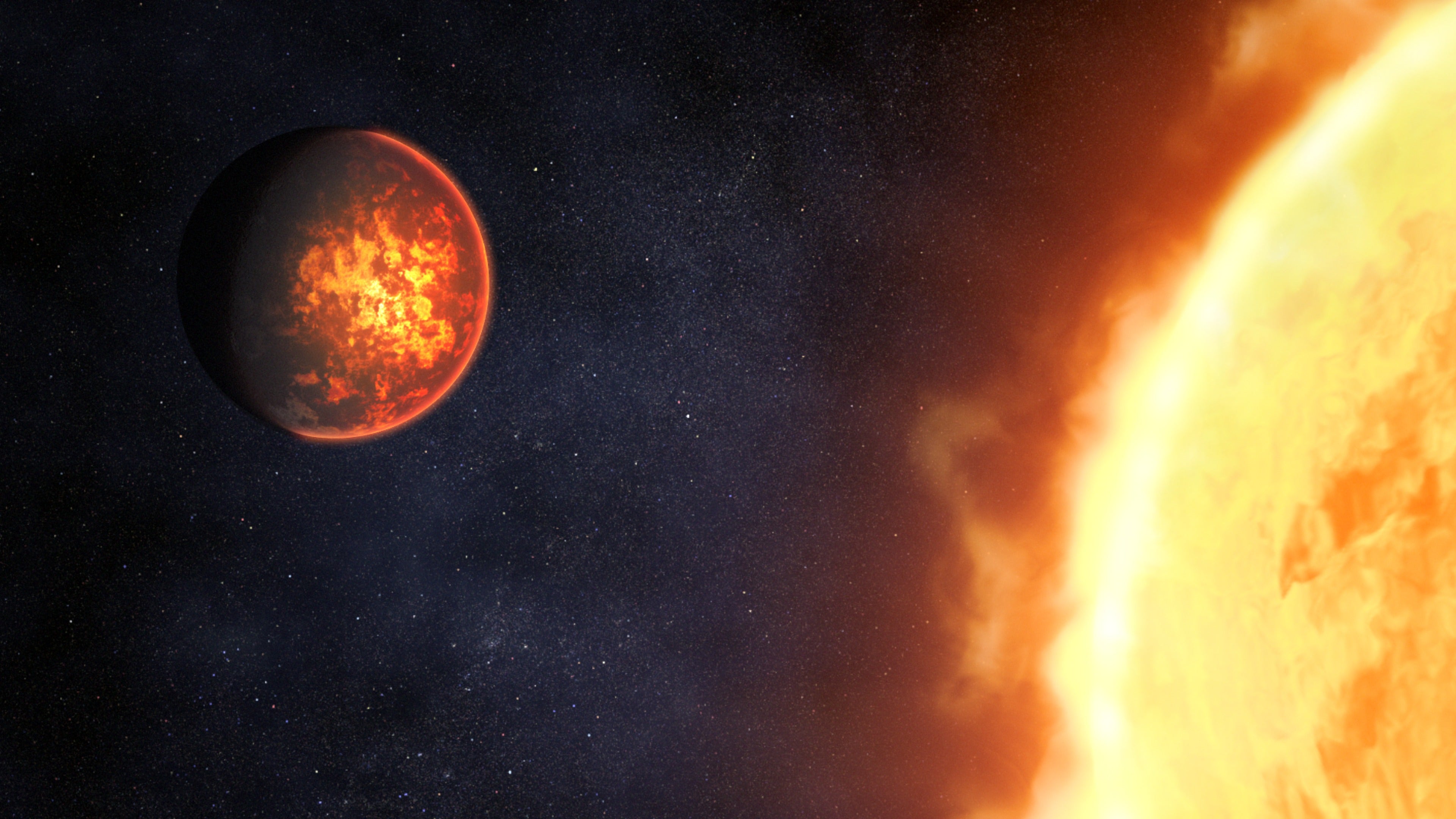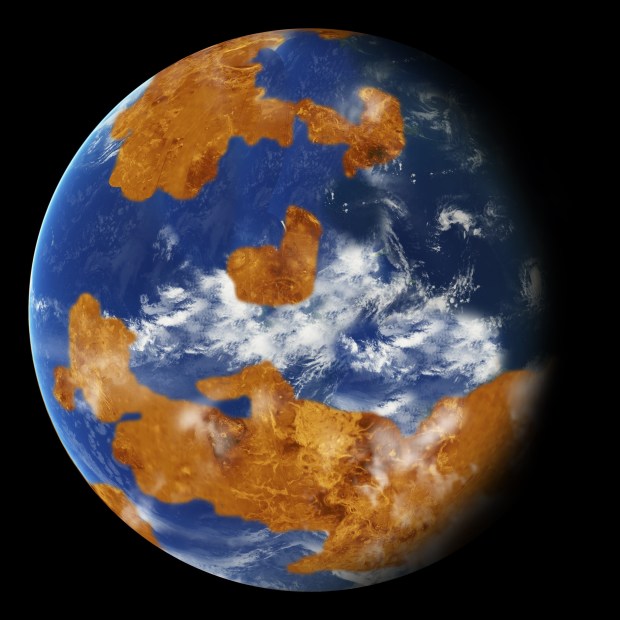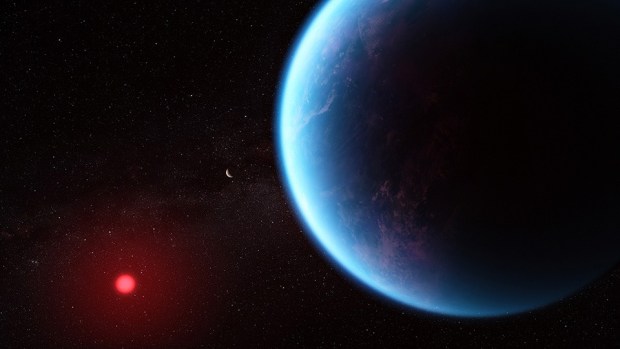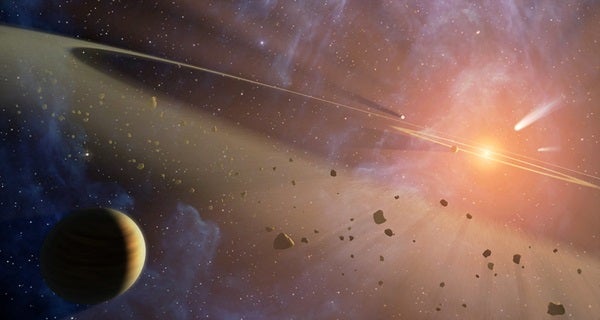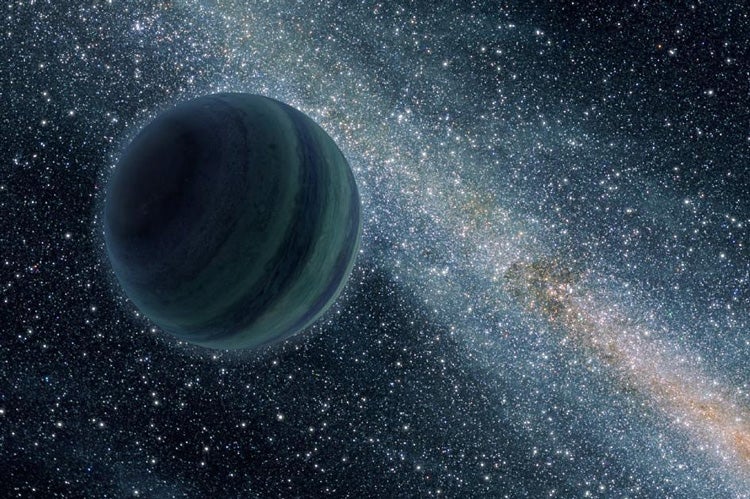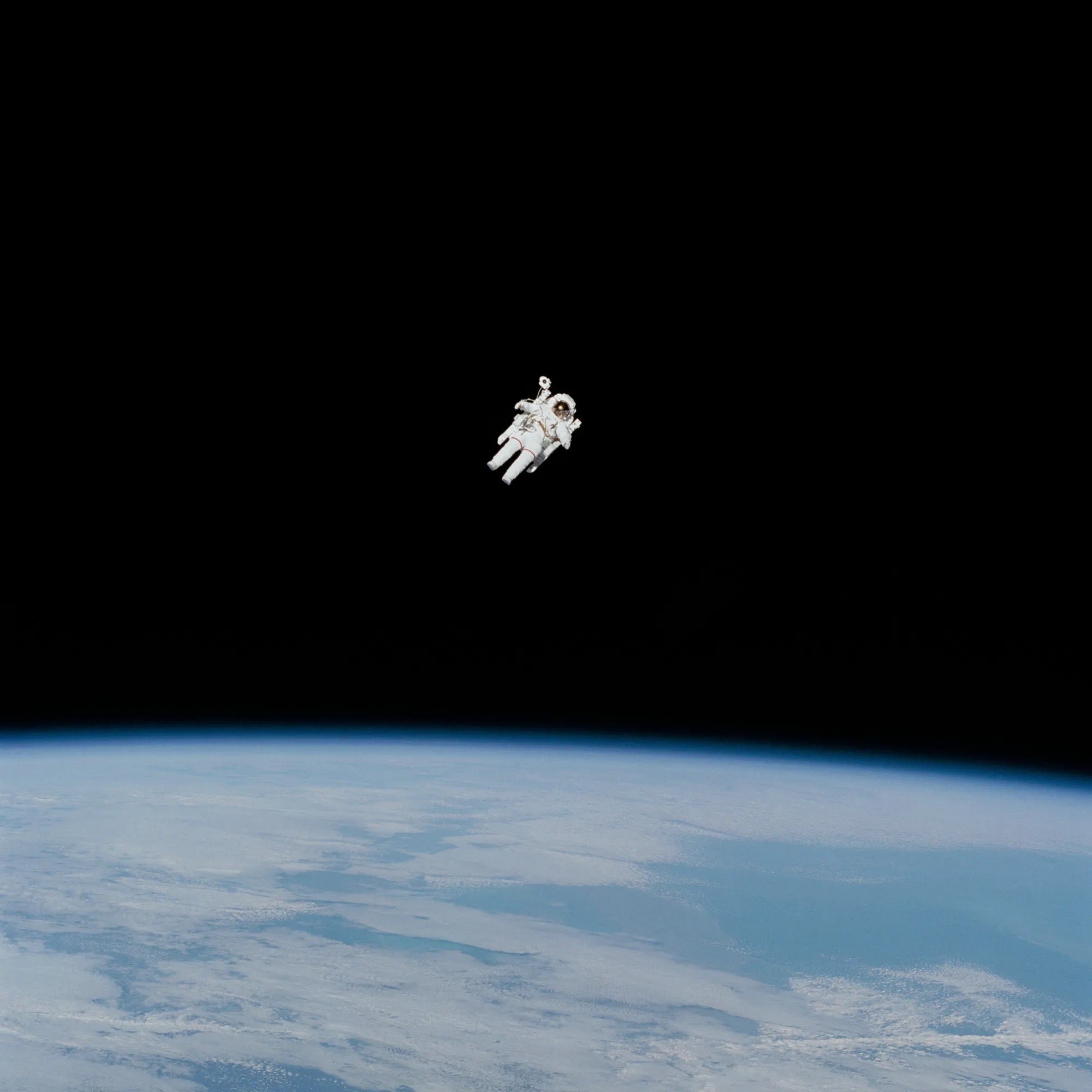The theory of the Big Bang predicts that variations in the density of matter in the first moments of the universe led the bulk of the matter in the cosmos to condense into a web of tangled filaments. This view is supported by computer simulations of cosmic evolution, which suggest that the universe is structured like a web, with long filaments that connect to each other at the locations of massive galaxy clusters. However, these filaments, although vast, are made mainly of dark matter, which is incredibly difficult to observe.
The first convincing identification of a section of one of these filaments was made earlier this year. Now a team of astronomers has gone further by probing a filament’s structure in three dimensions. Seeing a filament in 3-D eliminates many of the pitfalls that come from studying the flat image of such a structure.
“Filaments of the cosmic web are hugely extended and very diffuse, which makes them extremely difficult to detect, let alone study in 3-D,” said Mathilde Jauzac from the Laboratory of Astrophysics in Marseille (LAM), France, and University of KwaZulu-Natal in South Africa.
The team combined high-resolution images of the region around the massive galaxy cluster MACS J0717.5+3745 (MACS J0717), taken using Hubble, NAOJ’s Subaru Telescope, and the Canada-France-Hawaii Telescope (CFHT), with spectroscopic data on the galaxies within it from the W.M. Keck Observatory and the Gemini Observatory. Analyzing these observations together gives a complete view of the shape of the filament as it extends out from the galaxy cluster almost along our line of sight.
The team’s recipe for studying the vast but diffuse filament combines several crucial ingredients.
First ingredient: a promising target. Theories of cosmic evolution suggest that galaxy clusters form where filaments of the cosmic web meet, with the filaments slowly funneling matter into the clusters. “From our earlier work on MACS J0717, we knew that this cluster is actively growing, and thus a prime target for a detailed study of the cosmic web,” said Harald Ebeling from the University of Hawaii at Manoa.
Second ingredient: advanced gravitational lensing techniques. Albert Einstein’s famous general theory of relativity says that the path of light is bent when it passes through or near objects with a large mass. Filaments of the cosmic web are largely made up of dark matter that cannot be seen directly, but their mass is enough to bend the light and distort the images of galaxies in the background — a process called gravitational lensing. The team has developed new tools to convert the image distortions into a mass map.
Third ingredient: high-resolution images. Gravitational lensing is a subtle phenomenon, and studying it needs detailed images. Hubble observations let the team study the precise deformation in the shapes of numerous lensed galaxies. This, in turn, reveals where the hidden dark matter filament is located. “The challenge,” said Jean-Paul Kneib of LAM, “was to find a model of the cluster’s shape which fitted all the lensing features that we observed.”
Finally: measurements of distances and motions. Hubble’s observations of the cluster give the best two-dimensional map yet of a filament, but to see its shape in 3-D required additional observations. Color images, as well as galaxy velocities measured with spectrometers, using data from the Subaru, CFHT, W.M. Keck, and Gemini North telescopes, allowed the team to locate thousands of galaxies within the filament and to detect the motions of many of them.
A model that combined positional and velocity information for all these galaxies was constructed, and this then revealed the 3-D shape and orientation of the filamentary structure. As a result, the team was able to measure the true properties of this elusive filamentary structure without the uncertainties and biases that come from projecting the structure onto two dimensions, as is common in such analyzes.
The results obtained push the limits of predictions made by theoretical work and numerical simulations of the cosmic web. With a length of at least 60 million light-years, the MACS J0717 filament is extreme even on astronomical scales. And if its mass content as measured by the team can be taken to be representative of filaments near giant clusters, then these diffuse links between the nodes of the cosmic web may contain even more mass (in the form of dark matter) than theorists predicted. So much that more than half of all the mass in the universe may be hidden in these structures.

